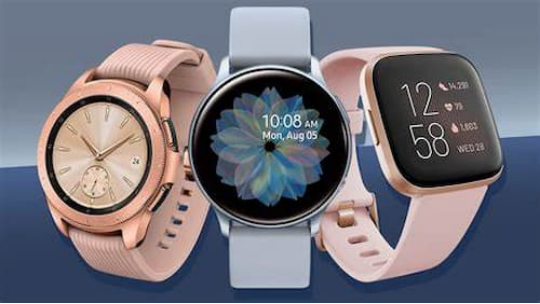Types of Material Used for Making Watch Cases
2571
11/04/2023

This 2022, we shouldn't dare to ignore personal wellness. We are overconfident that a vaccine will ultimately solve our health problems and that the ongoing epidemic will not be possible. We are still in charge of maintaining our health. Thank goodness for smartwatches, which keep us on schedule. The devices operate by using numerous fundamental, universal biological and chemical ideas. We've listed the essential information concerning this potent health wearable you should be aware of.

Smartwatches as your Fitness Tracking Device
The Green Light
You might not be conscious of it, but every smartwatch has a green light. What does it do, exactly? This component gauges your heart rate from your wrist. Because red and green oppose one another on the color wheel, spectroscopy reveals that blood absorbs green light. An optical sensor that can recognize reflected light is located on the back of the smartwatch. The primary distinction between spectrometers and smartwatches is the placement of the light source and detector on opposing sides in spectrometers. Due to the detector's reliance solely on the amount of light reflected from the target, the design of smartwatches may not be as accurate as spectrometers, but it can still do the work.
How Does the Light Work?

Photoplethysmography is the term for the use of light to measure heart rate. The instrument detects the change in red blood cell concentration as the blood vessels dilate and constrict; as the blood vessels dilate, they absorb more green light, whereas as they tighten, they absorb less green light. A software algorithm converts changes in light intensity measured by the detector from the reflected light into your pulse rate. You can use this technology the same way as the huawei watch d blood pressure feature. Additionally, the most recent hardware and software employ sophisticated algorithms to track pulse rate data and identify problems like atrial fibrillation, often known as irregular heartbeat.
Better Battery Technology
The problem with smartwatches is that new battery technology is constantly being developed, allowing for more sensors and greater wearable accuracy. The battery and materials science fields work on fascinating stuff that will change this technology. The batteries of the upcoming generation are far more effective and will enable much finer-scale monitoring. It is fantastic that some of their smartwatches and fitness trackers can operate on the basic minimum chores for up to two days. Additionally, by 2023, battery life will likely increase, allowing these items to last longer during outside activities.
Pulse Oximetry
We also need to understand how each current smartwatch's pulse oximetry functions. At this rate, this equipment helps medical experts better understand your oxygen saturation. The SpO2 feature also entails wearing a timepiece on your wrist. Then, it pushes light through your skin and into a detector and analyzes your blood swiftly. Due to the COVID-19 epidemic, it is currently rather useful. The monitoring tool can also help you determine whether you have a silent hypoxic condition characterized by abnormally low oxygen levels in the body without any outward indicators of respiratory trouble. It's a good thing we have this helpful health tool, thanks to the wonders of science and technology.
The Future Is Promising
Smartwatches, also fitness wearables, have advanced far beyond their initial capabilities of tracking your heart rate in a precise instant. Software algorithms have substantially improved to analyze all the data your wearable is measuring, in addition to new sensors and battery technologies for tracking health parameters. Wearable technology may one day play a crucial role in the early diagnosis of health issues because accuracy is steadily increasing. We hope you can fully utilize this device and realize its potential.
